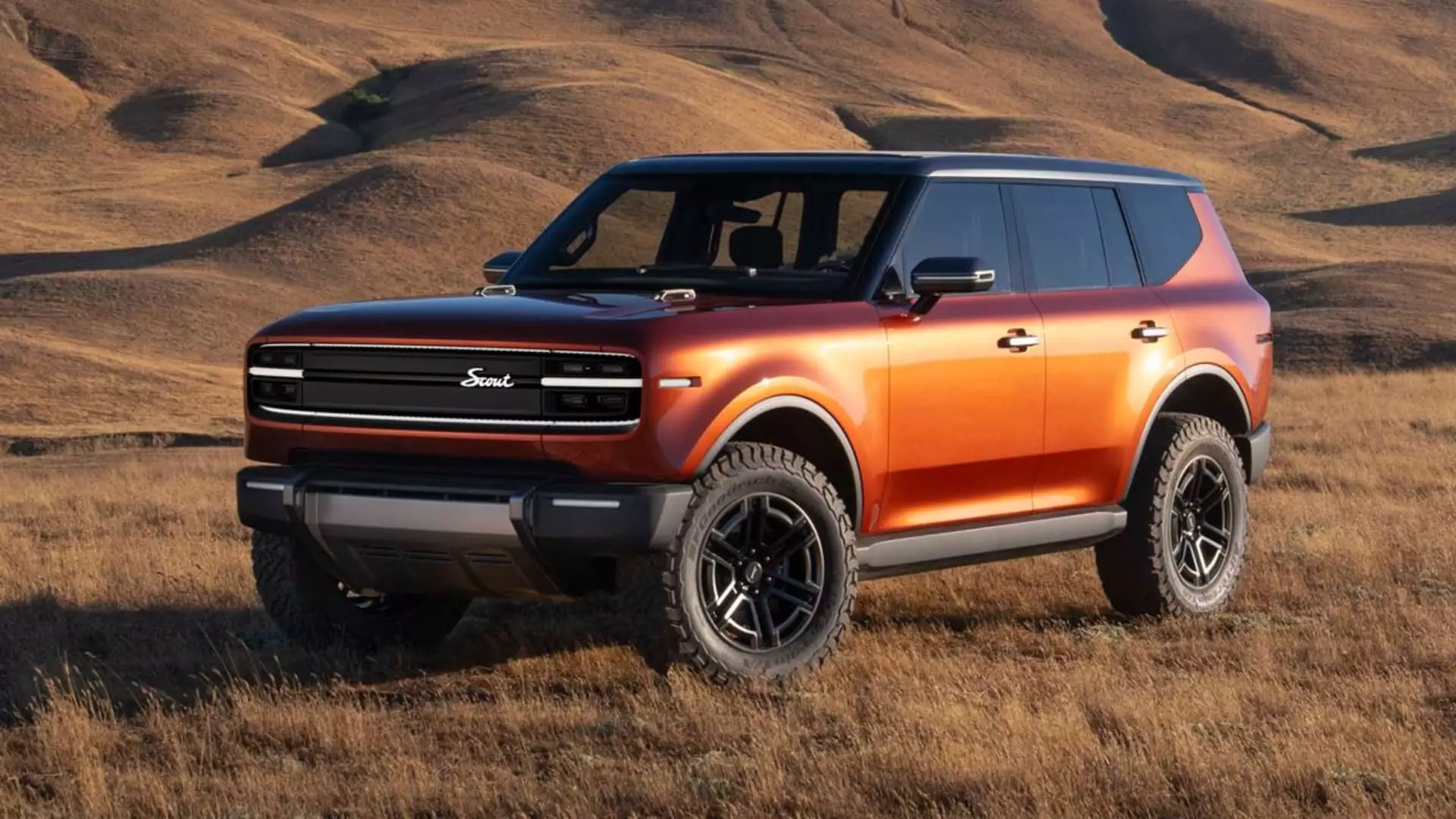Scout Motors, a name that rekindles memories of American automotive history, has made waves in the electric vehicle (EV) market with its recent announcements. Originally operational from 1961 to 1980, the renewed brand seeks to capture the spirit of its predecessors while navigating the contemporary landscape of electric mobility. But this reinvention comes at a pivotal juncture—the increasing complexity of the automotive market, which now includes not only electric vehicles but a hybrid evolution known as extended-range electric vehicles (EREVs). This innovative pivot underscores the brand’s commitment to adapt while keeping historical ties relevant.
Initially recognized only for electric vehicles, Scout’s recent decision to introduce EREVs indicates a strategic shift influenced by various market factors. With a slower-than-anticipated adoption rate for pure EVs in the United States, the company’s CEO, Scott Keogh, emphasizes the brand’s agility and readiness to adjust to changing consumer demands. This flexibility is critical as the market grapples with both technological advancements and consumer hesitance stemming from high prices and limited infrastructure.
EREVs, as defined by Scout, serve as a bridge for consumers transitioning into electrification. By incorporating a traditional internal combustion engine alongside electric propulsion, Scout aims to mitigate the anxiety associated with range limitations—a significant barrier for potential EV buyers. Keogh’s assertion that EREVs will introduce people to electrification while providing a “backup plan” resonates with a growing audience feeling uncertain about fully committing to battery-powered vehicles.
Entering a crowded marketplace, Scout’s dual offerings of the Traveler SUV and Terra pickup place the brand in direct competition with established automakers. The anticipated vehicles not only cater to the growing preference for electric trucks and SUVs but are also poised to target the most lucrative market segments in the U.S. automotive landscape. With approximately 40% of the domestic sales market represented by pickups and large SUVs, Scout’s focus on this lucrative area is strategically sound.
Furthermore, the intricacies of the electric vehicle market cannot be ignored. Competitors like Rivian and Lucid have faced substantial financial hurdles, losing significant sums per vehicle produced. In contrast, Keogh projects that Scout could achieve operational profitability within their first full year of production—a bold claim that demonstrates confidence in the burgeoning demand for their vehicles.
Scout’s ambitious plans come to life with construction of a $2 billion production facility in South Carolina, set to have a capacity of 200,000 vehicles annually. The decision to leverage Volkswagen’s existing battery cell manufacturing capabilities illustrates an astute operational strategy to keep production costs manageable, particularly as batteries remain the most expensive components of electric vehicles. This collaboration not only streamlines supply chains but enhances technological advancement in relation to battery efficiency and performance.
Additionally, the announced partnership between Volkswagen and Rivian signals opportunities for shared expertise in software and technology development—an area fundamental to the future of automotive innovation. Keogh describes this collaboration as beneficial for scaling and tech development, indicating that Scout’s operational frameworks will harness the benefits of established industry relationships.
The anticipated models, the Traveler and Terra, showcase modernized interpretations of classic Scout designs. Both vehicles are expected to deliver superior performance metrics, including the capability to navigate steep grades and accelerated speeds, appealing to consumers seeking both functionality and adventure. Priced competitively in the $50,000 to $60,000 range, the anticipated entry point makes these vehicles appealing to a broader audience, particularly those who may have hesitated due to higher price tags typically associated with electric models.
The design ethos extends to interior choices, reflecting a commitment to creating an inviting driving experience. Features such as expansive horizontal screens and the use of premium materials are intended to attract consumers who value comfort alongside performance.
As Scout Motors prepares for its public debut, the company is positioning itself not just as an automaker but as a lifestyle choice in the evolving landscape of electric mobility. As the brand anticipates further vehicle releases in the future, Keogh’s insights suggest a vision pluralizing the product line, potentially downscaling offerings as consumer preferences evolve.
Scout Motors stands at a fascinating crossroads—balancing historical identity with modern expectations and technological advancements. By commodifying flexibility, innovative design, and strategic partnerships, Scout is set to redefine its legacy within the American automotive narrative while contributing to the broader transition toward sustainable transportation solutions. In doing so, it hopes to attract a diverse customer base eager to embrace the future of driving.

